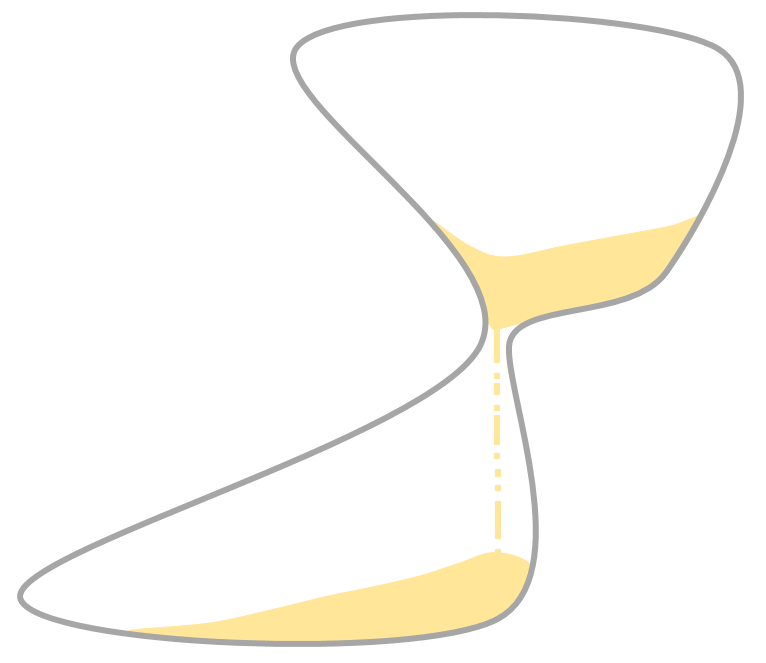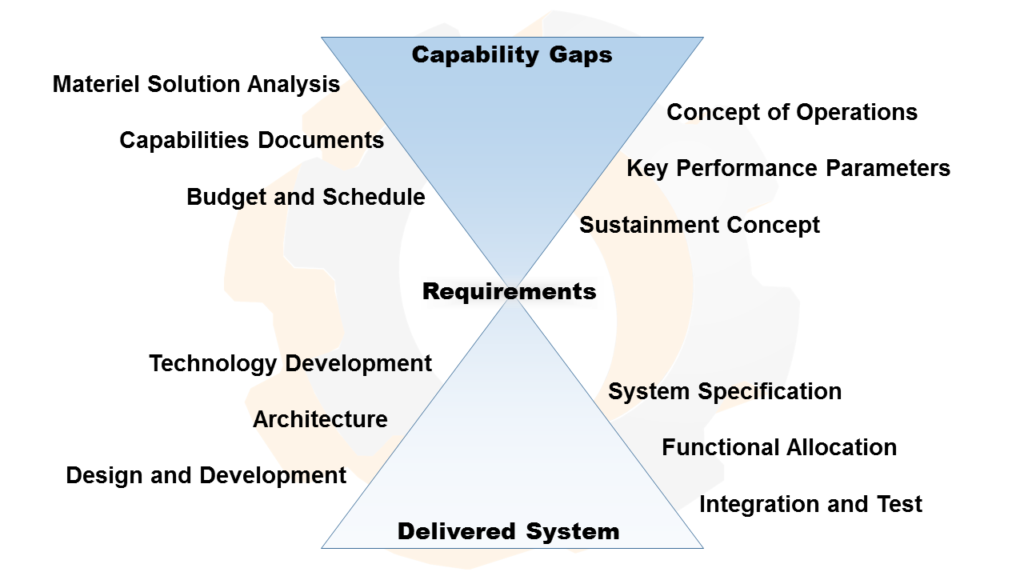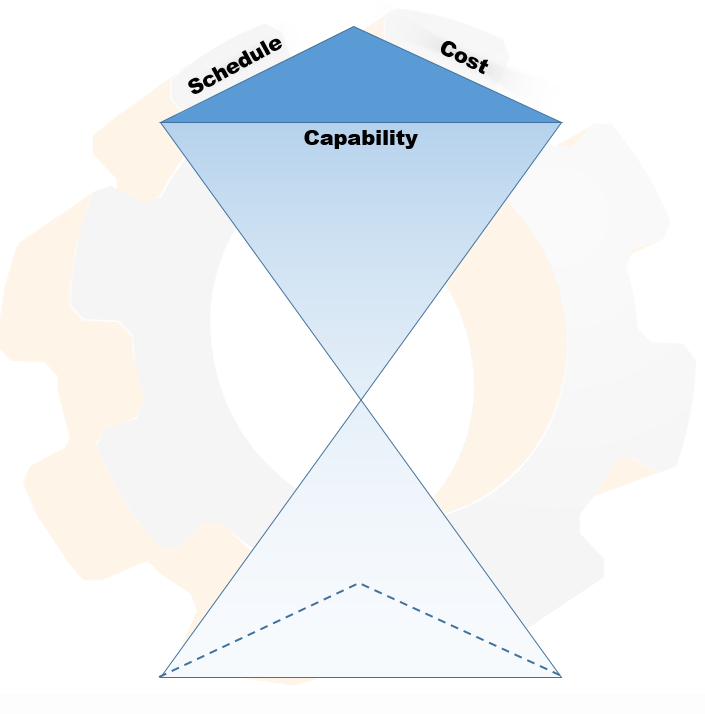
Have you ever seen a lopsided hourglass? Me neither. I imagine it wouldn’t be very practical.
Lately I’ve been thinking of the defense acquisition system as an hourglass. The symmetry of the hourglass reflects the success of the system. Allow me to explain…
The hourglass model

Engineering projects exist to fill a need. The customer’s role is to characterize that need down to a set of requirements. The contractor’s role is to develop a solution which fulfills the need. Ideally, the delivered system perfectly matches the capability gap.
The hourglass model above depicts this along with a selection of important activities. The requirements document is the inflection point. Yea, verily, this is what the system must do and indeed does. It is at once a constraint and an enabler to ensure that the customer’s goals are achieved.
Appropriately detailed requirements describe what the system must do but not how the functionality is achieved. The system engineer’s job is to ensure the designed system meets the capability needs in the mission context in addition to meeting all of the requirements.
A perfectly-designed system would be perfectly symmetrical. The customer would perfectly define the requirements, the contractor would perfectly design the solution, and the system would meet every little capability need. A perfect system is only theoretical, of course; not only is absolute perfection impossible, insisting on it would be poor engineering practice.
Cost and schedule dimensions

A real hourglass is three dimensional and our model should be as well. We’ve been talking about capabilities; equally important are cost and schedule. You may recognize this as the project management triangle or iron triangle.
These factors don’t have to be equally balanced, but they should be reasonable. As in a real hourglass, a good base is essential for the project to be effective.
System success is still reflected by symmetry between the top and bottom halves. The customer should define their expectations and the work should mirror those expectations throughout the project.
Asymmetry
Not all projects1 achieve this symmetry.
A lopsided hourglass is not a very good one. Projects that go over budget, over schedule, and/or underperform do a disservice to the warfighter and the taxpayer. In the worst cases, the hourglass is totally skewed; either the customer didn’t define their needs well or the contractor didn’t take care to meet them. The result is a system which cost way too much, took way too long and isn’t all that effective in the field even it it technically meets the requirements.
Another common failure mode is the bottle-neck. The contractor desires information2 from the top part of the hourglass in order to fully understand the capability gap and mission context. But, the customer offers only limited information or access. The contractor has no choice but to rely heavily on the requirements.
Building a better hourglass
It is our job as systems engineers to create symmetrical hourglasses. We achieve this through customer intimacy, mission understanding, and good engineering practices.
The beginning of the project should be focused on developing a solid understanding of the warfighters, their mission, the capability gap, and any relevant history. Carry that knowledge through the entire project. Every step of the engineering process should tie back to the capability needs implicitly if not explicitly. Every decision should be made with an understanding of how it will affect the success of the system.
You are contributing to the shape of the hourglass whether or not you’re doing it with purpose. Take ownership.
What works or doesn’t work about the hourglass model? Are there aspects I’ve missed? Do you have different way of thinking about acquisitions and system development? This is a brand new idea and I welcome your constructive feedback in the comments below.
Footnotes:
- This may be an understatement, at least for the DoD. Defense weapon system acquisitions have been on the Government Accountability Office’s “high-risk” watchlist since 1990. “DOD often pays more than anticipated, buys less than expected, and, in some cases, delivers fewer capabilities to the warfighter.”
- Sand, if you want to stretch the metaphor.